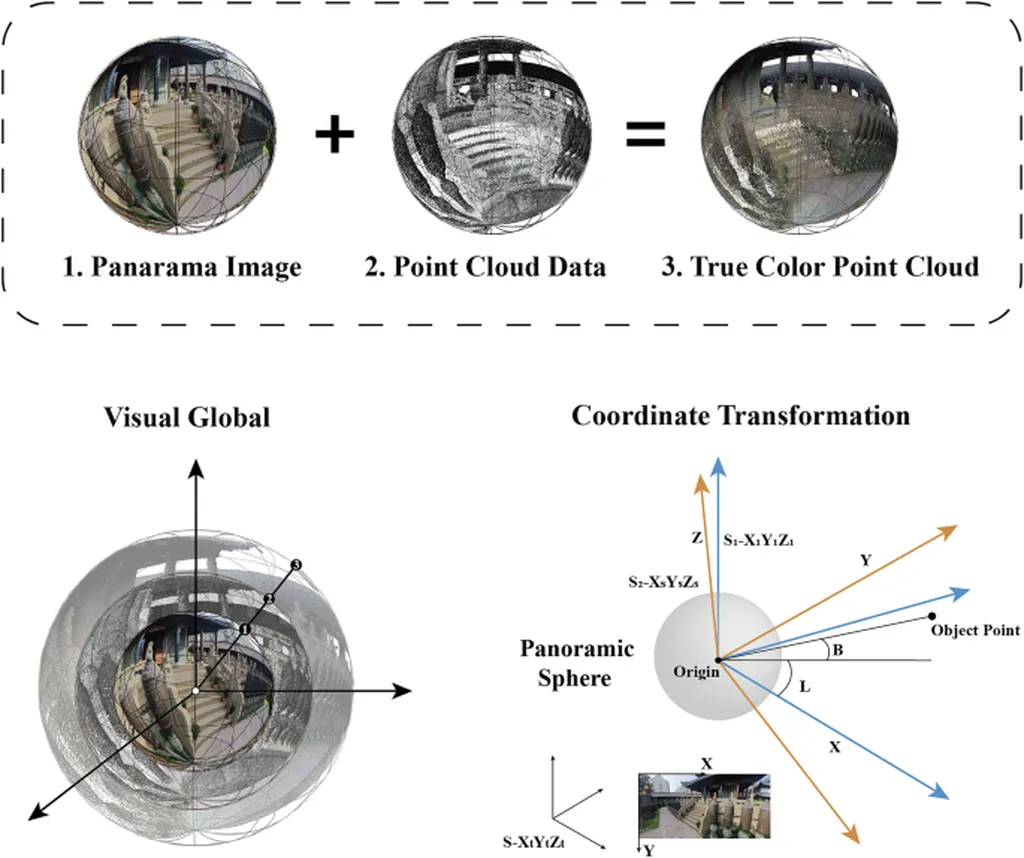In a significant stride towards enhancing the precision of ship navigation, researchers have developed a novel method that combines Light Detection and Ranging (LiDAR) technology with inertial navigation systems to improve berthing and unberthing operations. This innovative approach, detailed in a recent study published in the journal “China Ocean Engineering” (translated from ‘Zhongguo Jianchuan Yanjiu’), addresses the critical need for accurate positioning during close-range maneuvers, a challenge that has long plagued maritime operations.
The lead author of the study, Zhibo He from the State Key Laboratory of Maritime Technology and Safety at Wuhan University of Technology, explains that the method involves a multi-coordinate conversion and time registration algorithm. This algorithm unifies the temporal and spatial data from various sensing devices, correcting the collected point cloud data to ensure accuracy. He emphasizes, “The identified shoreline intersection serves as a characteristic point for berthing, aiding unmanned surface vehicles in positioning.”
One of the key innovations in this research is the enhanced Random Sample Consensus (RANSAC) berth shoreline detection method. This method optimizes the clustering cost function and considers berth elevation, significantly improving the accuracy of shoreline detection despite the randomness of point cloud data. The study’s experimental results are impressive, demonstrating positioning errors of less than 0.256 meters. This level of precision is a game-changer for the maritime industry, particularly for unmanned surface vehicles that rely on accurate positioning for safe and efficient operations.
The commercial impacts of this research are substantial. Precise berthing and unberthing operations can reduce the risk of collisions and groundings, minimizing damage to vessels and infrastructure. This is particularly relevant in crowded ports and harbors where space is limited, and margins for error are slim. Additionally, the enhanced accuracy can lead to more efficient use of port facilities, reducing turnaround times and increasing throughput.
For the maritime sector, the opportunities are vast. The integration of LiDAR and inertial navigation systems can be applied to a wide range of vessels, from commercial ships to military craft. The method’s adaptability to various real-world interferences makes it a robust solution for diverse maritime environments. As the industry moves towards greater automation and unmanned operations, the need for precise positioning technologies will only grow, making this research particularly timely and relevant.
In summary, the study by Zhibo He and colleagues represents a significant advancement in maritime navigation technology. By fusing LiDAR with inertial navigation systems, the researchers have developed a method that offers high-precision positioning for berthing and unberthing operations. This innovation has the potential to enhance safety, efficiency, and productivity in the maritime sector, paving the way for the next generation of unmanned surface vehicles.

